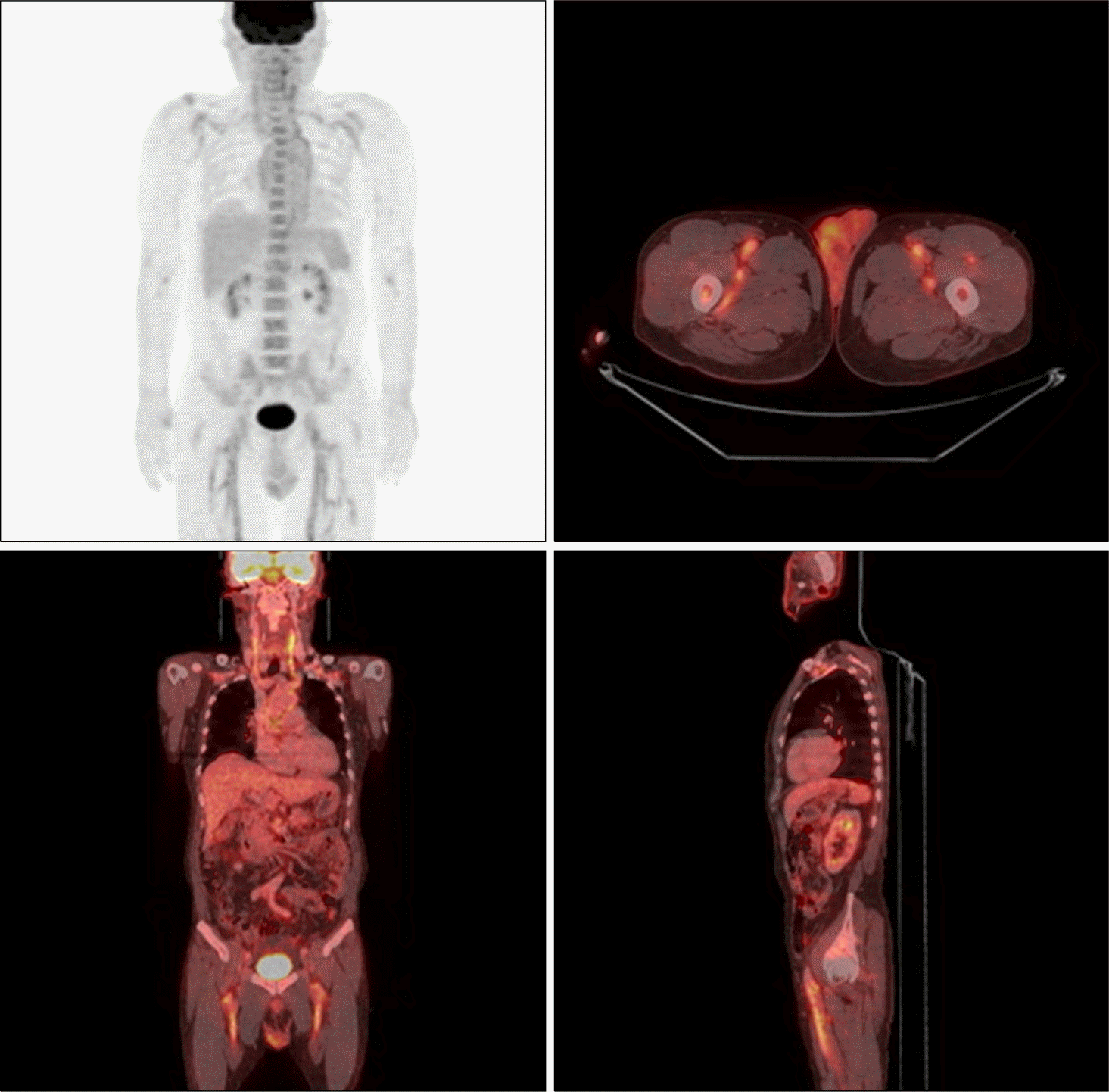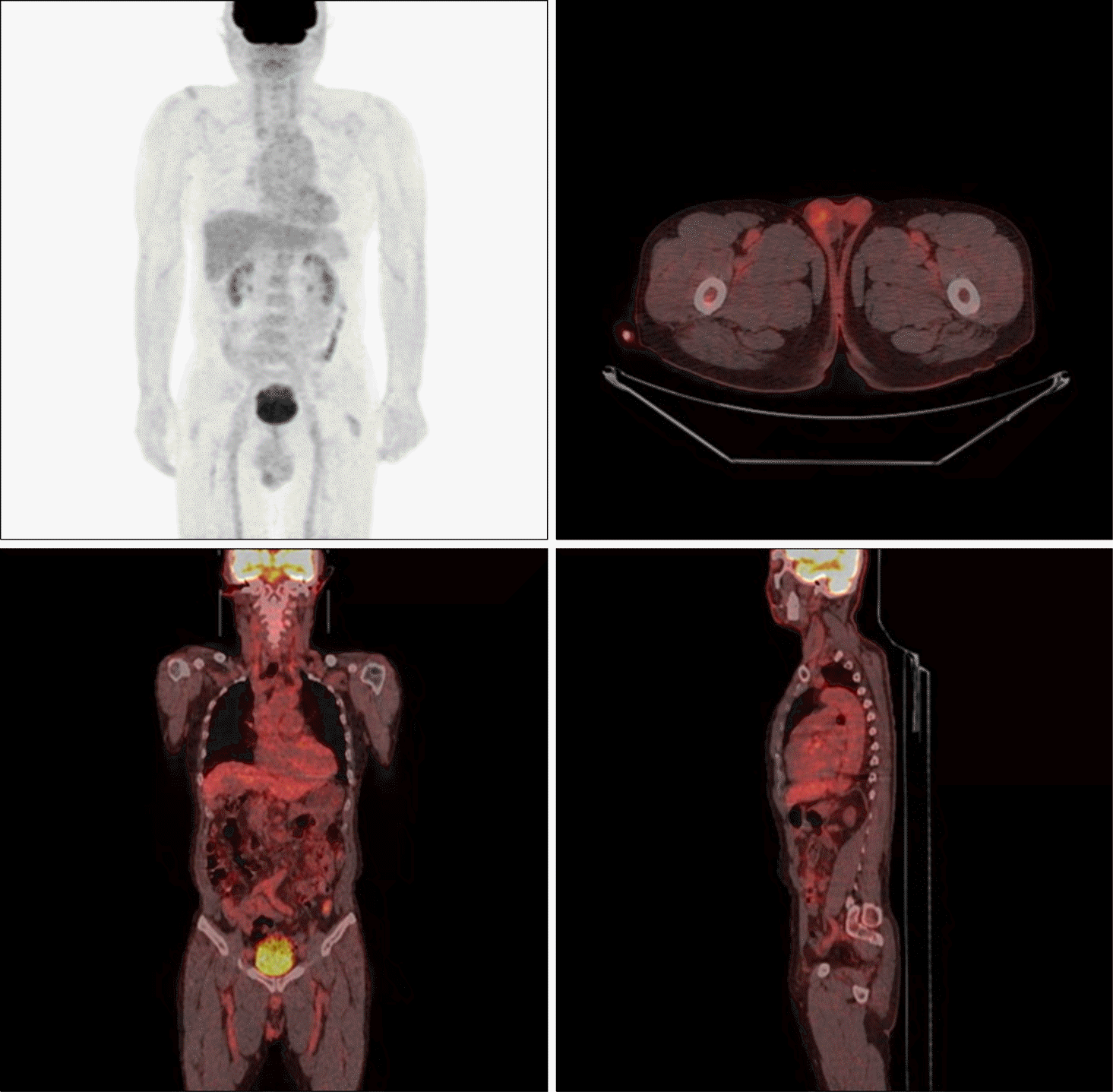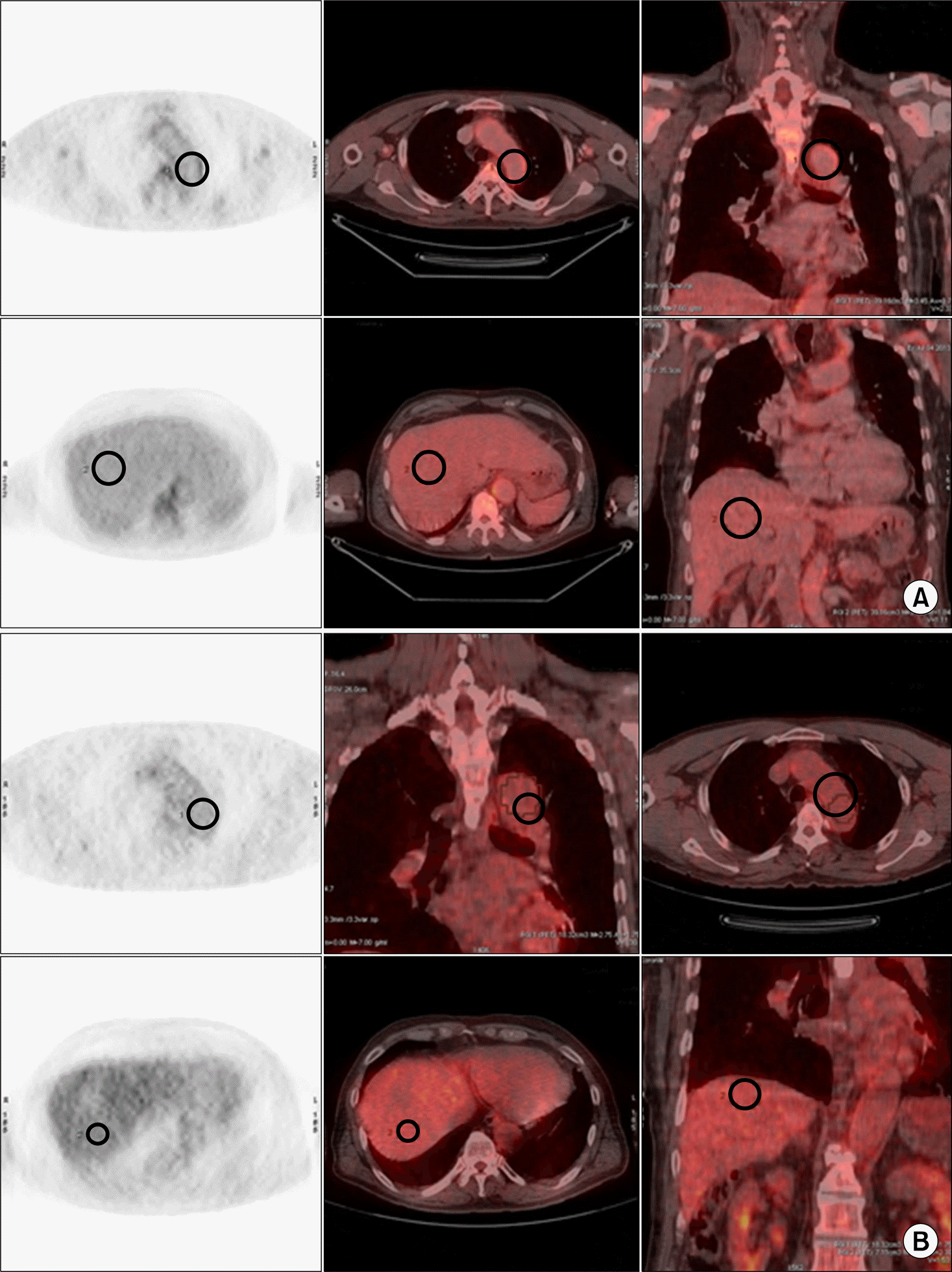Abstract
Giant cell arteritis (GCA) is a systemic vasculitis which typically occurs in persons over 50 years old. GCA is closely related to polymyalgia rheumatica (PMR). A temporal artery biopsy is the gold standard test for the diagnosis of GCA. Recently, there is increasing evidence for the role of 18 F-fluorodeoxyglucose positron emission tomography (18 F-FDG-PET) in diagnosis of vasculitis. Here, we report on a case of a 67-year-old Korean male who was diagnosed with atypical GCA in subclinical stage concomitant with PMR by 18 F-FDG-PET. After treatment, abnormal findings of 18 F-FDG-PET were improved.
Go to : 
REFERENCES
1. Patil P, Karia N, Jain S, Dasgupta B. Giant cell arteritis: a review. Eye Brain. 2013; 5:23–33.
2. Firestein GS, Budd RC, Gabriel SE, McInnes IB, O'Dell JR. Kelley's textbook of rheumatology. 9th ed.Philadelphia, PA: Saunders;2013. p. 1461–5.
3. Salvarani C, Cantini F, Boiardi L, Hunder GG. Polymyalgia rheumatica and giant-cell arteritis. N Engl J Med. 2002; 347:261–71.

4. Hautzel H, Sander O, Heinzel A, Schneider M, Müller HW. Assessment of large-vessel involvement in giant cell arteritis with 18F-FDG PET: introducing an ROC-analysis-based cutoff ratio. J Nucl Med. 2008; 49:1107–13.

6. Salvarani C, Gabriel SE, O'Fallon WM, Hunder GG. Epidemiology of polymyalgia rheumatica in Olmsted County, Minnesota, 1970-1991. Arthritis Rheum. 1995; 38:369–73.

7. Gonzalez-Gay MA, Garcia-Porrua C, Llorca J, Gonzalez-Louzao C, Rodriguez-Ledo P. Biopsy-negative giant cell arteritis: clinical spectrum and predictive factors for positive temporal artery biopsy. Semin Arthritis Rheum. 2001; 30:249–56.

8. Roth AM, Milsow L, Keltner JL. The ultimate diagnoses of patients undergoing temporal artery biopsies. Arch Ophthalmol. 1984; 102:901–3.

9. Fletcher TM, Espinola D. Positron emission tomography in the diagnosis of giant cell arteritis. Clin Nucl Med. 2004; 29:617–9.

10. Besson FL, Parienti JJ, Bienvenu B, Prior JO, Costo S, Bouvard G, et al. Diagnostic performance of 18 F-fluorodeox-yglucose positron emission tomography in giant cell arteritis: a systematic review and meta-analysis. Eur J Nucl Med Mol Imaging. 2011; 38:1764–72.
11. Kang MI, Park HJ, Jeon HM, Kang Y, Lee SW, Lee SK, et al. A case of atypical giant cell arteritis presenting as a fever of unknown origin. J Rheum Dis. 2012; 19:299–301.

12. Kwon CM, Hong YH, Chun KA, Cho IH, Kim MJ, Shin DG, et al. A case of silent giant cell arteritis involving the entire aorta, carotid artery and brachial artery screened by integrated PET/CT. Clin Rheumatol. 2007; 26:1959–62.

13. Dasgupta B, Cimmino MA, Kremers HM, Schmidt WA, Schirmer M, Salvarani C, et al. 2012 provisional classification criteria for polymyalgia rheumatica: a European League Against Rheumatism/American College of Rheumatology collaborative initiative. Arthritis Rheum. 2012; 64:943–54.

Go to : 
 | Figure 1.
18 F-fluorodeoxyglucose positron emission tomography before treatment. There are increased glucose metabolism in the walls of the ascending aorta, aortic arch, thoracic descending aorta, both subclavian arteries, both common carotid arteries and especially both common femoral arteries and their large branches with wall thickening. |
 | Figure 2.
18 F-fluorodeoxyglucose positron emission tomography after 12 months of treatment. There is no metabolic evidence of arteritis. |
 | Figure 3.
18 F-fluorodeoxyglucose positron emission tomography images and aorta to liver maximal standardized uptake value ratio. (A) The aorta to liver ratio before treatment was 1.49 (thoracic aorta 3.45, liver 2.32). (B) The aorta to liver ratio after treatment was 0.98 (thoracic aorta 2.75, liver 2.80). |




 PDF
PDF ePub
ePub Citation
Citation Print
Print


 XML Download
XML Download